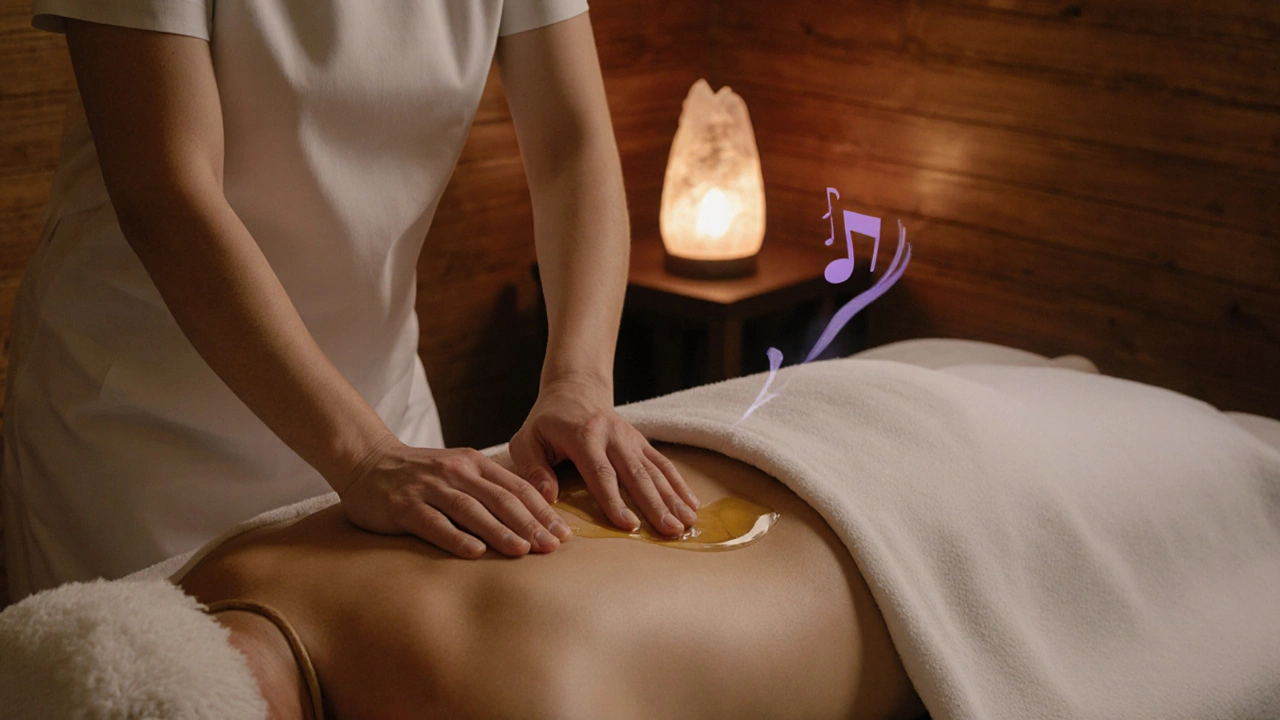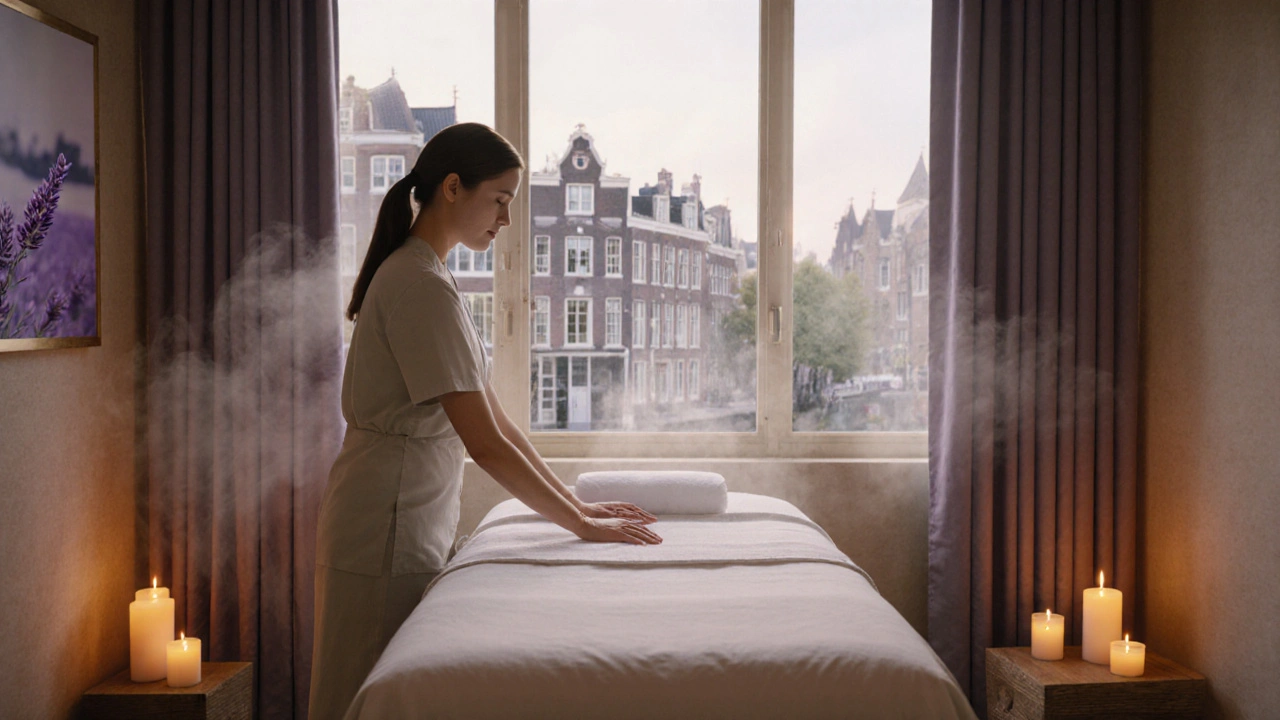Full Body Massage: Natural Relief for Anxiety and Depression

Ever notice how even a quick shoulder rub can take the edge off a stressful day? Imagine multiplying that comfort tenfold—that’s the magic of a full body massage, especially when anxiety or depression is wearing you down. You don't have to rely only on pills or self-help apps to feel better; hands-on therapy like massage can hit the reset button for both your body and your mood.
If your worries are always buzzing or you feel weighed down by sadness, full body massage offers a break. It boosts those feel-good chemicals in your brain (think serotonin and dopamine) and cuts down on stress hormones that make your body tense. For many people, even just one session brings a real shift in how they feel—calmer, lighter, more able to cope.
Not sure what kind of massage suits you? Or maybe you’re wondering what it’d actually be like to walk into a session? There's no mystery here—just a step-by-step journey to comfort. We’ll walk you through picking a style, finding a trustworthy therapist, and making sure your first visit is a breeze (and totally safe).
- Big Benefits: Why Massage Calms the Mind
- Types of Full Body Massage for Mental Health
- What to Expect and How to Book
- Safety, Pricing, and Your Burning Questions
Big Benefits: Why Massage Calms the Mind
If you’re juggling anxious thoughts or low moods, you’ve probably tried a lot of quick fixes. Here’s where a full body massage stands out—it’s more than pampering, it’s a practical way to untangle the stress and pressure that build up in your mind and body.
Mental health experts agree: touch has a deep effect on our brains. When your muscles are kneaded and stretched, your body releases serotonin and dopamine—chemicals that lift your mood. At the same time, your levels of stress hormones like cortisol drop. No wonder clients say they feel lighter and clearer after a session.
In 2023, a major study in the Journal of Clinical Psychiatry found that people with anxiety who got weekly massages for six weeks reported a 30% drop in symptoms compared to those who got only standard care. That’s a pretty big shift with just a pair of caring hands and some quiet time.
| Benefit | What it Means for You |
|---|---|
| Lowers Stress Hormones | Less physical tension, fewer racing thoughts |
| Boosts Mood Chemicals | Improved mood, more energy |
| Better Sleep | Fall asleep faster and stay asleep longer |
| Physical Relaxation | Muscles relax, heart rate steadies |
That’s not all—massage helps your body remember what it feels like to relax. When you’re used to being wound up all the time, even an hour on the massage table can reset your nervous system. Breathing slows, your thoughts get less cluttered, and you leave feeling like yourself again.
Another hidden perk: regular massage sessions encourage you to pay attention to what your mind and body need. That’s a habit that sticks with you long after you leave the spa or clinic.
Types of Full Body Massage for Mental Health
Different massage styles tap into unique ways of relaxing your body and easing your mind. Not every method suits everyone, but knowing your options helps you pick what’ll actually help calm anxiety or lift your mood. Here’s a down-to-earth run-through of the most common types you’ll find offered for mental wellness.
- Swedish Massage: This is the classic, go-to style for first-timers. Using smooth, gliding strokes with light to medium pressure, Swedish massage is famous for helping folks unwind and let go of stress. If your muscles feel stiff or you just need to switch off, this is usually a safe bet.
- Deep Tissue Massage: If knots and built-up tension are making you restless, deep tissue targets those deeper muscles. It can feel more intense, but it’s great if your body gets physically uptight when you’re anxious or feeling low.
- Shiatsu: This Japanese technique uses finger pressure on key points all over your body. It’s known for making energy flow better and giving a grounding sense of calm. Some people say it even helps their sleep.
- Aromatherapy Massage: Here’s where things smell amazing. Essential oils like lavender or chamomile get mixed with gentle massage to add an extra layer of relaxation. Studies have shown that these scents actually lower stress and may boost your overall mood.
- Hot Stone Massage: Warm stones placed on your body melt away tension and boost circulation. If you’ve got anxiety that hits you in waves, the warmth and weight of the stones can actually help you feel safe and comforted.
Still on the fence about which to try? Quick tip: If your anxiety is high and you feel sensitive, start with Swedish or aromatherapy. If you get physical pain with stress, deep tissue or hot stone could be a win.
| Massage Type | Best For | Typical Session Length |
|---|---|---|
| Swedish | General relaxation, first-timers | 60-90 minutes |
| Deep Tissue | Muscle tension, chronic pain | 60-90 minutes |
| Shiatsu | Mood support, energy balance | 60 minutes |
| Aromatherapy | Stress relief, mood-lifting | 60-90 minutes |
| Hot Stone | Anxiety, deep relaxation | 75-90 minutes |
Remember, you can always mix and match. Chat with your therapist about your main goals, like lowering anxiety or beating blues, and they can suggest what fits best. Bottom line? The right full body massage isn’t just about muscles—it’s about feeling more like yourself again.

What to Expect and How to Book
If you've never tried a full body massage, you might be wondering what the whole appointment actually feels like. Honestly, it’s way less awkward and a lot more relaxing than most people think. Here’s the low-down on what usually happens.
When you arrive, your massage therapist will ask a few questions about how you’re feeling—physically and mentally. They want to know if you have sore spots, health issues, or what your big goal is (stress relief, deep relaxation, or just to zone out, for example). You’ll get some privacy to undress to your comfort level—some folks keep underwear on, others go fully bare, but you’re covered with a sheet the whole time except for the spot being worked on.
The actual massage usually starts with gentle strokes to get your muscles warmed up. Then the pressure may increase, depending on what you prefer. You might notice the lights are dim, soft music is playing, and the room is warm—these are all tricks to help you unwind. A one-hour session is the standard, but you can go shorter or longer. Many people zone out so deeply, it’s like taking a power nap with a bonus mood boost.
| Session Length | Typical Price Range (USD) | What's Covered |
|---|---|---|
| 30 minutes | $40 - $60 | Focus on back, neck, and shoulders |
| 60 minutes | $70 - $120 | Head-to-toe relaxation (most popular!) |
| 90 minutes | $100 - $160 | Extra time for trouble spots and deeper relief |
Booking a massage couldn’t be easier these days. Here’s how most people do it:
- Google or check review apps like Yelp for licensed massage studios or spas in your area.
- Look for therapists who mention experience with anxiety, depression, or relaxation therapy. Their websites usually spell this out.
- Call or book online. A lot of places now let you pick your time slot and even your preferred therapist.
- Ask about their COVID-19 and hygiene policies if that’s a big concern for you.
- Heads up: some busy spots book out a week or two in advance, so snag your spot soon if you're planning ahead.
After booking, most spots send you a reminder, and some even let you fill out your intake forms ahead of time online—so you can just slip in and get straight to the relaxing part. Many therapists will follow up after your session to see how you’re feeling, which is handy if you want to tweak anything for next time.
Safety, Pricing, and Your Burning Questions
Your comfort and safety should always come first when booking a full body massage. You don’t want surprises—just pure relaxation. Here’s what you need to know to keep things safe and smooth.
- Always choose a licensed massage therapist. Ask for their certification or license number, and check reviews online. Legit therapists follow strict hygiene rules and know how to adapt the session if you have injuries or feel uncomfortable.
- Share your medical history up front. If you’re dealing with things like heart problems, recent surgeries, or pregnancy, say so. This isn’t rude—it's smart. A good therapist won’t be offended; they want you safe.
- Red flags? Walk away. If a place feels shady, the therapist doesn’t listen, or the environment doesn’t seem clean, trust your gut. Your well-being isn’t worth risking for a deal.
- COVID-19 is still a thing. Double-check if your spa follows up-to-date cleaning and mask guidelines, especially if you're at higher risk or want extra peace of mind.
Money matters, too. Prices for full body massages can be all over the map, depending on where you live, the therapist’s experience, and the spa’s vibe. In most U.S. cities, expect to pay:
| Session Length | Average Price |
|---|---|
| 30 minutes | $40-$60 |
| 60 minutes | $70-$120 |
| 90 minutes | $120-$180 |
Pro tip: Some clinics offer discounted packages if you book multiple sessions, so ask!
Still got questions swirling in your head? Here are honest answers to the ones nearly everyone asks:
- Does massage ‘fix’ anxiety or depression? Not completely. It helps a ton, but it’s usually a boost—not a cure. Think of it as another tool in your self-care kit.
- What if I feel awkward or embarrassed during a session? Totally normal! You’re allowed to say if you want more or less pressure, or ask for extra draping. Therapists are pros at handling nerves or questions.
- How often should I get a massage for anxiety or depression? Most folks feel real benefits with a session every one to two weeks, but even once a month makes a difference.
- Can I use my health insurance or FSA? Some plans cover massage if it's prescribed for a specific medical reason—even mental health—so give your provider a quick call and double-check.
There you go—safety basics, price pointers, and answers people want but are sometimes too shy to ask. The bottom line: massage should be relaxing from start to finish, and you deserve to feel good about every step.


